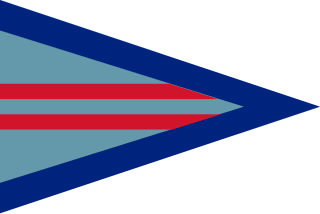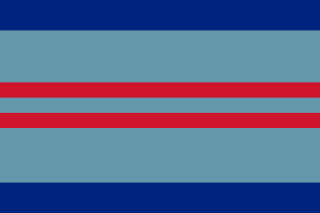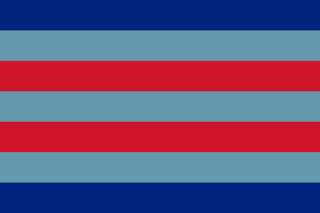
Marshal of the Royal Air Force (MRAF) is the highest rank in the Royal Air Force (RAF). In peacetime it was granted to RAF officers in the appointment of Chief of the Defence Staff (CDS), and to retired Chiefs of the Air Staff (CAS), who were promoted to it on their last day of service. While surviving Marshals of the RAF retain the rank for life, the highest rank to which officers on active service are promoted is now air chief marshal. Although general promotions to Marshal of the Royal Air Force have been discontinued since the British defence cuts of the 1990s, further promotions to the rank may still be made in wartime, for members of the Royal Family and certain very senior RAF air officers in peacetime at the discretion of the monarch; all such promotions in peacetime are only honorary, however. In 2012, the then Prince of Wales was promoted to the rank in recognition of his support for his mother, Queen Elizabeth II, in her capacity as head of the armed forces (commander-in-chief), while in 2014 Lord Stirrup, who had served as Chief of the Air Staff and Chief of the Defence Staff for over seven years, was also promoted.
Flying officer is a junior commissioned rank in the Royal Air Force (RAF) and the air forces of many countries which have historical British influence. It is also sometimes used as the English translation of an equivalent rank in countries which have a non-English air force-specific rank structure. In these cases a flying officer usually ranks above pilot officer and immediately below flight lieutenant.

Squadron leader is a commissioned rank in the Royal Air Force and the air forces of many countries which have historical British influence. It is also sometimes used as the English translation of an equivalent rank in countries which have a non-English air force-specific rank structure.

Wing commander is a senior commissioned rank in the British Royal Air Force and air forces of many countries which have historical British influence, including many Commonwealth countries but not including Canada and South Africa. It is sometimes used as the English translation of an equivalent rank in countries which have a non-English air force-specific rank structure. It ranks immediately above squadron leader and immediately below group captain.

Group captain is a senior commissioned rank in the Royal Air Force, where it originated, as well as the air forces of many countries that have historical British influence. It is sometimes used as the English translation of an equivalent rank in countries which have a non-British air force-specific rank structure. Group captain has a NATO rank code of OF-5, meaning that it ranks above wing commander and immediately below air commodore, and is the equivalent of the rank of captain in the navy and of the rank of colonel in other services.

Air commodore is a senior rank in the air forces of the United Kingdom and other countries including Australia, New Zealand, India, Pakistan and Zimbabwe. It is a one-star rank and is an air officer rank. It originated in, and continues to be used by the Royal Air Force.

Air vice-marshal (AVM) is a two-star air officer rank which originated in and continues to be used by the Royal Air Force. The rank is also used by the air forces of many countries which have historical British influence and it is sometimes used as the English translation of an equivalent rank in countries which have a non-English air force-specific rank structure.
Air marshal is an air-officer rank which originated within the Royal Air Force. The rank is used by the air forces of many countries which have historical British influence, including many Commonwealth nations. The rank is usually equivalent to a vice admiral or a lieutenant general.

Air chief marshal is a high-ranking air officer originating from the Royal Air Force. The rank is used by air forces of many countries that have historical British influence. An air chief marshal is equivalent to an Admiral in a navy or a full general in an army or other nations' air forces.
Pilot officer is the lowest commissioned rank in the Royal Air Force and the air forces of many other Commonwealth countries. It ranks immediately below flying officer.
Marshal of the air force or marshal of the air is a five-star rank and an English-language term for the most senior rank in some air forces. It is usually the direct equivalent of a general of the air force in other air forces, a field marshal or general of the army in many armies, or a naval admiral of the fleet.
The officer ranks of the Royal Air Force, as they are today, were introduced in 1919. Prior to that Army ranks were used.

The military ranks of the Soviet Union were those introduced after the October Revolution of 1917. At that time the Imperial Russian Table of Ranks was abolished, as were the privileges of the pre-Soviet Russian nobility.

Admiral is the highest active rank of the Royal Australian Navy and was created as a direct equivalent of the British naval rank of admiral. It is a four-star rank. Since 1968, generally the only time the rank is held is when the Chief of the Defence Force is a navy officer.

Air chief marshal is the highest active rank of the Royal Australian Air Force and was created as a direct equivalent of the British Royal Air Force rank of air chief marshal. It is also considered a four-star rank. The only time the rank is held is when the Chief of the Defence Force is an Air Force officer.

The Royal Air Force uniform is the standardised military dress worn by members of the Royal Air Force. The predominant colours of Royal Air Force uniforms are blue-grey and Wedgwood blue. Many Commonwealth air forces' uniforms are also based on the RAF pattern, but with nationality shoulder flashes. The Royal Air Force Air Cadets wear similar uniforms.
Major general is a senior rank of the Australian Army, and was created as a direct equivalent of the British military rank of major general. It is the third-highest active rank of the Australian Army, and is considered to be equivalent to a two-star rank. A major general commands a division or the equivalent.

Air marshal is the second-highest active rank of the Royal Australian Air Force and was created as a direct equivalent of the British Royal Air Force rank of air marshal, it is also considered a three-star rank. The rank is held by the Chief of Air Force (CAF), and when the Vice Chief of the Defence Force (VCDF), the Chief of Joint Operations (CJOPS) and/or the Chief of the Capability Development executive (CCDE) are Air Force officers.
Marshal of the Royal Australian Air Force (MRAAF) is the highest rank of the Royal Australian Air Force and was created as a direct equivalent of the British Royal Air Force rank of Marshal of the Royal Air Force. It is considered a five-star rank.

Rear admiral is the third-highest active rank of the Royal Australian Navy and was created as a direct equivalent of the British rank of rear admiral. It is a two-star rank.














